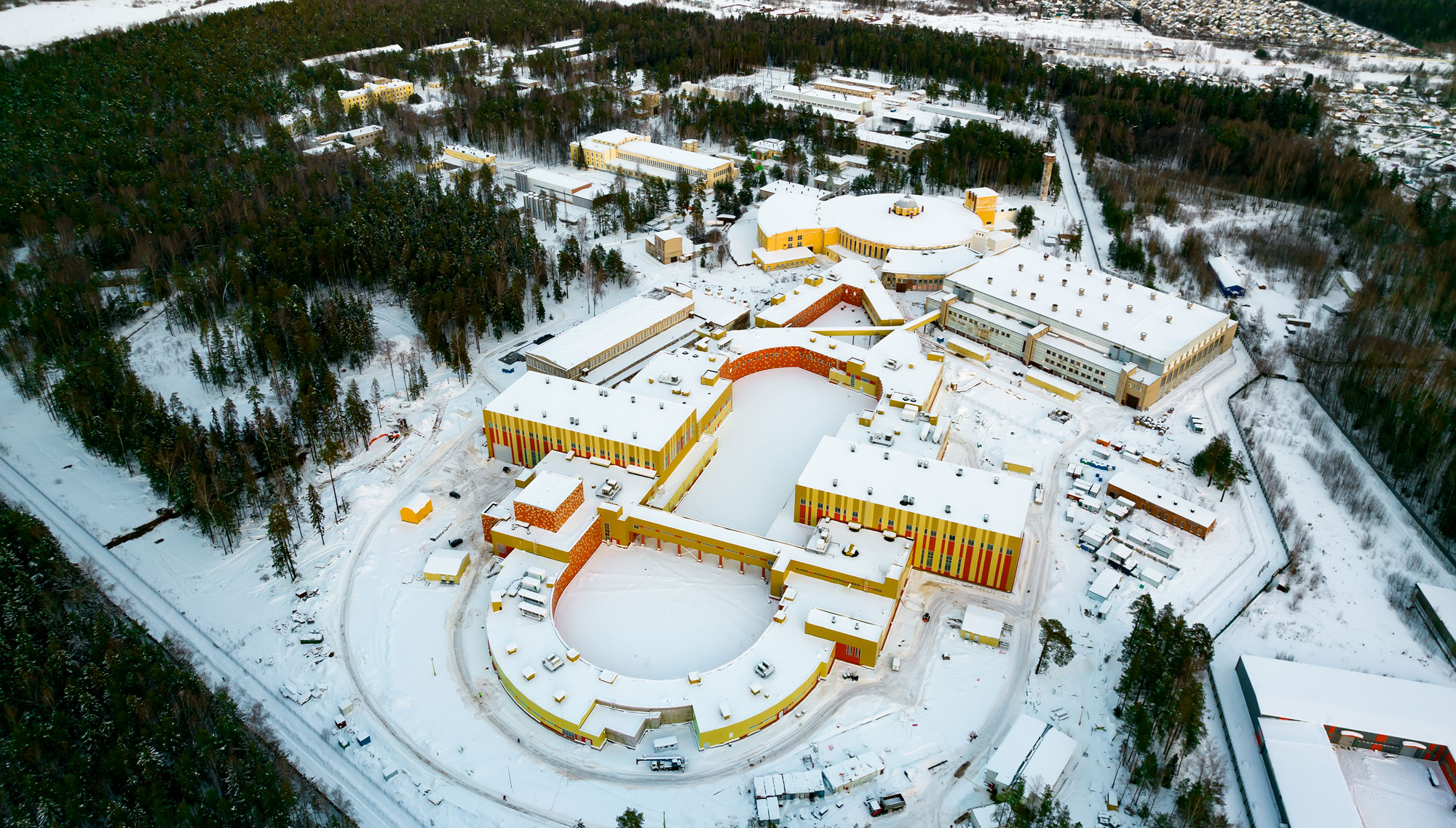Fourth stage of commissioning works at NICA Complex completed
News, 07 February 2023
On 3 February, the fourth and the longest run in the history of the NICA Accelerator Complex finished at the Veksler and Baldin Laboratory of High Energy Physics JINR. The project team worked out the conditions of joint operation of all the elements of the collider’s heavy-ion injection chain, achieved a record for the Nuclotron intensity of a xenon nuclei beam, and gained significant statistics at the BM@N facility.
The commissioning run started in September 2022 after several months of thorough preparation. The project team worked out the modes of heavy ions generation in the ion source and their acceleration in the linear accelerator, considerably modified the magnetic cryostat system of the Nuclotron, optimised the modes of the cryogenic complex.
As a result, during the run specialists ensured the simultaneous operation of a prototype of a specialised heavy ion source KRION, a linear heavy ion accelerator, and two superconducting synchrotrons, namely the Booster and the Nuclotron. The project team managed to achieve a record for the Nuclotron intensity of the xenon nuclei beam (up to 10 million nuclei per cycle) accelerated to an energy of 3.9 GeV/n and to develop a strategy for obtaining intense beams of heavy ions for subsequent storage in the collider. Currently, no other scientific centres in the world accelerate such beams up to relativistic energies.
“The main task of this run was to ensure that all the main systems of the accelerator complex worked for the longest possible time, to the maximum,” Acting Director of the JINR Laboratory of High Energy Physics Andrey Butenko commented. He said that a lot of failures of various systems of the complex were received, as a result of which further actions to increase the stability and reliability of the complex became clear. “The subsystems that need to be further upgraded and improved, and those systems in which minor changes need to be made, have been clearly identified. We were also able to determine which systems today meet all the requirements for working as part of the complex,” he said.
Practically all systems of the complex have been significantly developed: cryogenic systems of superconducting magnets of the Booster and the Nuclotron have been adjusted in their interoperation, electronic cooling of xenon ions in the Booster has been tuned. It increased the intensity of the accelerated beam by two times in the Nuclotron. The project participants put into operation a dynamic correction of the beam orbit in the Booster (i. e. automatically rearranging during ion acceleration), investigated the modes of ion recharge during extraction from the Booster, optimised the operating conditions of accelerating high-frequency systems. An important stage of modernisation of the vacuum system of the channel for transporting the extracted Nuclotron beam to experimental facilities with a fixed target has been completed, a new diagnostic system has been put into operation.
The work on heavy ion beams was carried out according to the programs of applied and physical research. Thus, in November 2022, the employees of the Complex tested the SOChI (Station Of Chip Irradiation) applied station on argon ions. Specialists irradiated test samples of construction materials, nuclear photoemulsions and a CR-39 plate with relativistic xenon nuclei. The participants of the work measured the spectra in the optical range of transition and Cherenkov radiation during the passage of a relativistic xenon beam through a thin diamond target at different angles, which in the future will make it possible to create a new composition and energy detector of ion beams in the energy range of the Nuclotron.
The BM@N facility has been prepared for operation. At two energies, 3.9 and 3 GeV per nucleon, it has accumulated significant statistics – more than half a billion events. It should be noted that this was the first nuclear physics experiment in the country of the JINR location at the accelerator complex, conducted with electronic ion cooling.
“The implementation of the run programme required intense coordinated work of the entire laboratory team, which successfully coped with the planned program,” Andrey Butenko stressed. “An important result is also the accumulated material for the programme creation for the further development of the injection complex, which will allow achieving the performance required for the collider”.
We hereby remind you that during the previous, third, commissioning run at the NICA (January – March 2022), the project team achieved simultaneous operation of the three main accelerators of the NICA Complex. A carbon ion beam accelerated to an energy of 3 GeV/n was brought to the BM@N facility, where large data statistics were collected during the SRC (Short Range Correlation) physical experiment.
